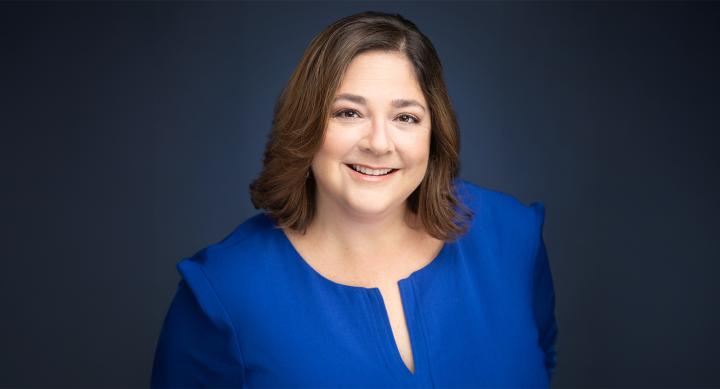
Over their lifetime, U.S. adults have a 40 percent chance of developing type 2 diabetes, according to the Centers for Disease Control and Prevention. However, for Hispanic adults, the chance is more than 50 percent, and they are more likely to develop it at a younger age. Among this population, diabetes complications also tend to hit harder, leading to higher rates of kidney failure, diabetes-related vision loss and blindness. Hispanic adults are also more likely to be prediabetic, which is when blood sugar levels are higher than normal, but not high enough to be diagnosed as type 2 diabetes.
For previous research projects, Julie Zuñiga, PhD, RN, FAAN, associate professor, worked on self-management of diabetes, but she found her research had the greatest impact when seeking to prevent diabetes in the Hispanic population.
She believes if there’s a way to either delay or halt the onset or the progression of diabetes, it could help prevent serious health issues—and she has a personal connection to this goal.
“I’m Hispanic, and a lot of my family members have diabetes,” Zuñiga said. “I’m excited about advancements in endocrinology research, especially as they could apply to my own family.”
Zuñiga received the inaugural UT Austin School of Nursing Dean’s Research Stimulus Pilot Award, which supports innovative concepts and approaches in nursing science/research to improve the health of patients, families and communities.
“This award will go a long way to advance research on preventing diabetes in Hispanic populations by addressing causes beyond their control, such as social determinants of health,” she added.
For example, Zuñiga said those who are living in poor housing, lack education or stable income, will have a greater chance of developing diabetes. The study will look at the impact of social determinants of health on glucose variability and glucose variability is a precursor to diabetes.
She explained how everyone’s glucose levels fluctuate during the day when they’re eating. However, if there are several spikes of glucose, then the body isn’t able to use the sugar as effectively as it should, which is called insulin insufficiency. Because of this, sometimes the levels will look normal, making it difficult to see the spikes in glucose. This also makes it challenging to know which foods cause the spikes to make necessary dietary changes.
Zuñiga is collaborating with Heather Cuevas, PhD, RN, ACNS-BC, FCNS, assistant professor; Alex García, PhD, RN, FAAN, professor and associate dean for faculty affairs; and Beth Heitkemper, PhD, RN, assistant professor.
They are looking at using a constant glucose monitor, that is worn on the back of the arm, to calculate glucose levels around the clock. This method is mostly used on those who have diabetes that needs to be controlled by insulin, which has been extremely effective in maintaining levels throughout the day. They are investigating whether the monitor can be used to help track glucose spikes and their potential causes.
Their goal is to determine if the constant glucose monitors will be an inventive way to help Hispanic adults without diabetes prevent the disease. This could also be a way to give faster feedback than going to the doctor every six months and getting their glucose levels checked. They will also investigate whether changes in glucose levels are related to social determinants of health.
For this study, they are targeting the group of Hispanic adults who are at extremely high risk of developing diabetes—ones whose parents have diabetes. Zuñiga said if a parent has diabetes, that makes them more likely to develop it, regardless of other factors.
Zuñiga has developed patient education materials about diabetes and prevention. She said that typically patients are educated once they’re diagnosed, but individuals need to be informed if they’re at high risk so they can make changes to their health in advance.
Another major element that will come out of this study is the participants will receive video clips of the research findings. Zuñiga and her team will develop the videos and build a library of instructions that will be used for a larger study based on what was initially found.
“This study will be sustainable because health insurance and health clinicians will find value in using these instruments to prevent illness, which could decrease health costs,” Zuñiga said.
For Zuñiga, leading this research effort means she has the opportunity to give back to her community and address problems that will help Hispanic residents of Austin, as well as help herself and her family.
“I’m developing research that is useful to my community—something that they want and need would be the best way for me, as a nurse researcher, to work with my own family,” she concluded.

